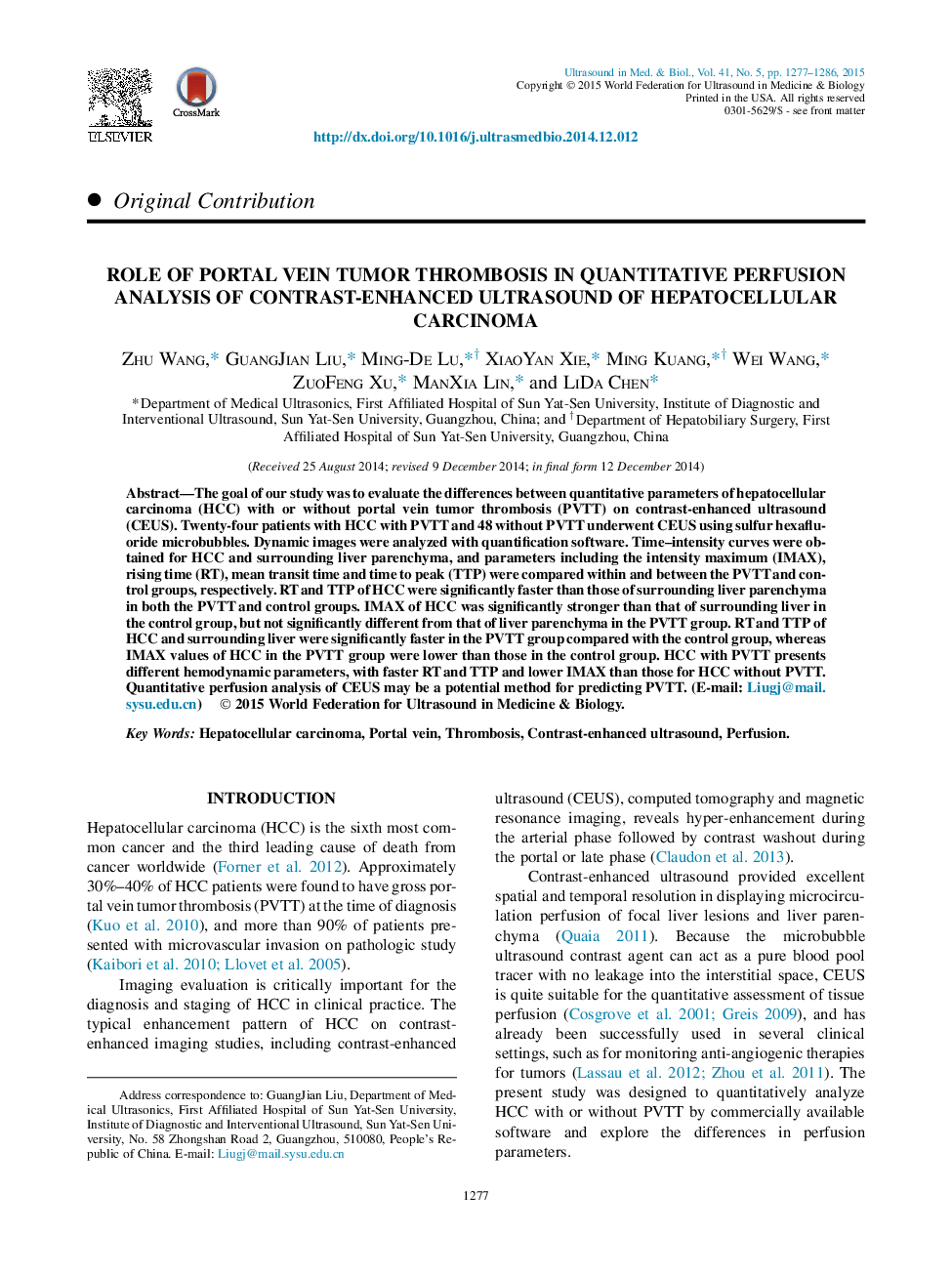| Article ID | Journal | Published Year | Pages | File Type |
|---|---|---|---|---|
| 10691434 | Ultrasound in Medicine & Biology | 2015 | 10 Pages |
Abstract
The goal of our study was to evaluate the differences between quantitative parameters of hepatocellular carcinoma (HCC) with or without portal vein tumor thrombosis (PVTT) on contrast-enhanced ultrasound (CEUS). Twenty-four patients with HCC with PVTT and 48 without PVTT underwent CEUS using sulfur hexafluoride microbubbles. Dynamic images were analyzed with quantification software. Time-intensity curves were obtained for HCC and surrounding liver parenchyma, and parameters including the intensity maximum (IMAX), rising time (RT), mean transit time and time to peak (TTP) were compared within and between the PVTT and control groups, respectively. RT and TTP of HCC were significantly faster than those of surrounding liver parenchyma in both the PVTT and control groups. IMAX of HCC was significantly stronger than that of surrounding liver in the control group, but not significantly different from that of liver parenchyma in the PVTT group. RT and TTP of HCC and surrounding liver were significantly faster in the PVTT group compared with the control group, whereas IMAX values of HCC in the PVTT group were lower than those in the control group. HCC with PVTT presents different hemodynamic parameters, with faster RT and TTP and lower IMAX than those for HCC without PVTT. Quantitative perfusion analysis of CEUS may be a potential method for predicting PVTT.
Related Topics
Physical Sciences and Engineering
Physics and Astronomy
Acoustics and Ultrasonics
Authors
Zhu Wang, GuangJian Liu, Ming-De Lu, XiaoYan Xie, Ming Kuang, Wei Wang, ZuoFeng Xu, ManXia Lin, LiDa Chen,
